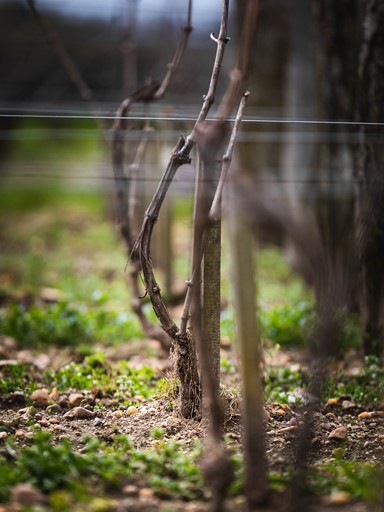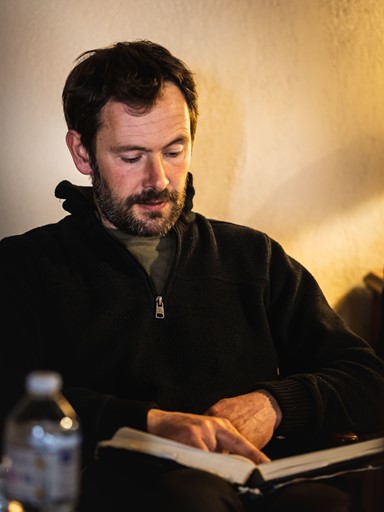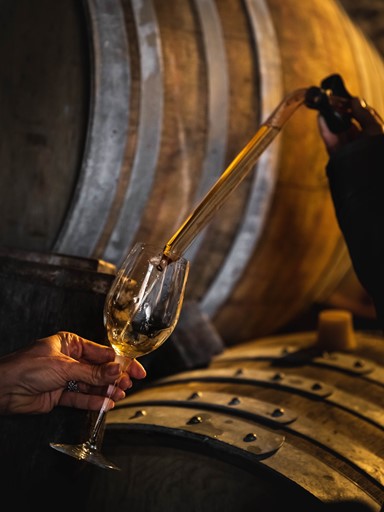
The Chef in the Cellar
Reynald Héaulé, Loire Valley
The Art of Assemblage
Reynald Héaulé is an independent winemaker based in the eastern portion of the Loire Valley, near Orléans. After working with winemakers in Burgundy and the Loire, he developed his own domaine with a focus on his passion; cultivating rare and often underused grape varieties. He has dedicated himself to reviving forgotten grapes native to his region, growing them alongside more common grapes and then blending them in the winery to showcase their possibilities.
Amongst the bottles and cartons in his cellar office is a well-worn copy of "Dictionnaire Encyclopédique des Cépages" by Pierre Galet, who is considered the father of modern Ampélographie – the study of wine grapes. He consults it with eager and knowing references and displays an encyclopaedic knowledge of native varieties.
20 & Counting...
This passion reveals itself in his six hectares of vineyards which feature densely planted plots organised in strict rows presenting a cornucopia of grapes. There are currently twenty varieties, but he hints another soon may be added.
Many are grapes grown throughout France: Cabernet Franc, Gamay, Pinot Noir, Pinot Meunier, Cot, Sauvignon Blanc, Pinot Gris, Chenin, Riesling and Chardonnay. But growing between those are rarities like Romorantin, Menu Pineau (Orbois), a vigorous white that is a bit softer than Chenin, and Tresallier, which is related to the variety Sacy from Saint-Pourçain and a cross of Pinot Gris and Gouais Blanc. Héaulé has single-handedly revived Meslier-Saint-François, a cross of Chenin and Gouais that was once widely planted in France but now grown exclusively in this part of the Loire.
His is especially proud of his plantings of Gascon (Mondeuse Noir), a Lyonnaise grape which now has only a half hectare in all of France. He has even replanted a few rare pre-phylloxera hybrids long after the rest of France was grubbing theirs up. Héaulé admits that while the hybrids are not good on their own, in a blend they can “add a different dimension and create something more interesting.”

“I have always been passionate about ampélographie– the study of grapes… their leaves, their sensitivities, the history of each grape…. it’s fascination, and it is our heritage. We must protect and honour that.”
- Reynald Héaulé
Secret Recipes
Using many grapes allows him to create more layers of flavours and textures in his wines. He likens his blending process to a chef in a kitchen, adding spices and secret ingredients to create more exciting dishes. He even refers to the creation of his final assemblage using the verb cuisiner (to cook). He goes back multiple times to each blend, tasting and retesting and adjusting, like a great chef. And when each wine is completed, he carefully guards its final recipe.
Like a chef who carefully sources his ingredients and sets up his mise-en-place, Reynald tastes each variety at harvest and constructs a plan. Two varieties picked the same harvest day may be combined directly in the press together. Or he may choose to ferment first and then blend the juice later. Or he might wait until after a long period of ageing and then make a final assemblage. Of the domaine's eight cuvées, five of them include four or more varieties, and exactly which varieties and their percentages in the blend change with each vintage. He explains, “The final wine is the result of many elements in interaction…”

“Many of the ancient grapes of France have been eliminated and aren’t allowed in the appellations. It’s a shame. When you add other grapes, you develop more complexity… and when people taste my wines they see that complexity… I love to surprise.”
- Reynald Héaulé
Good Sense
Blending such diverse grapes also offers the chance to vary the recipe each year according to the conditions and grape characteristics. Héaulé thrives in this flexibility, which he refers to as the “freedom of common sense”.
“I adapt. In a cold year, I can integrate stronger grapes like Cot or Cabernet Franc, or in a sunnier vintage when the grapes are naturally stronger, I can use more of the softer grapes like Pinot and Gamay. If you really think about it… it’s just good sense.”
This good sense applies to every aspect of his vision, from his sustainable farming approach to the diversity of his ageing vessels. Which, when combined with his incredible range of grapes and acute blending precision, creates delicious recipes we can’t wait to taste!
View Wines
“I always prefer blended wines…There are very few grapes that are sufficient alone. When they are blended, and well made, they come alive and can be sublime. Like a great meal.”
- Reynald Héaulé
Images by Matt Hickman
Words by Allison Burton-Parker
Browse Wines

















